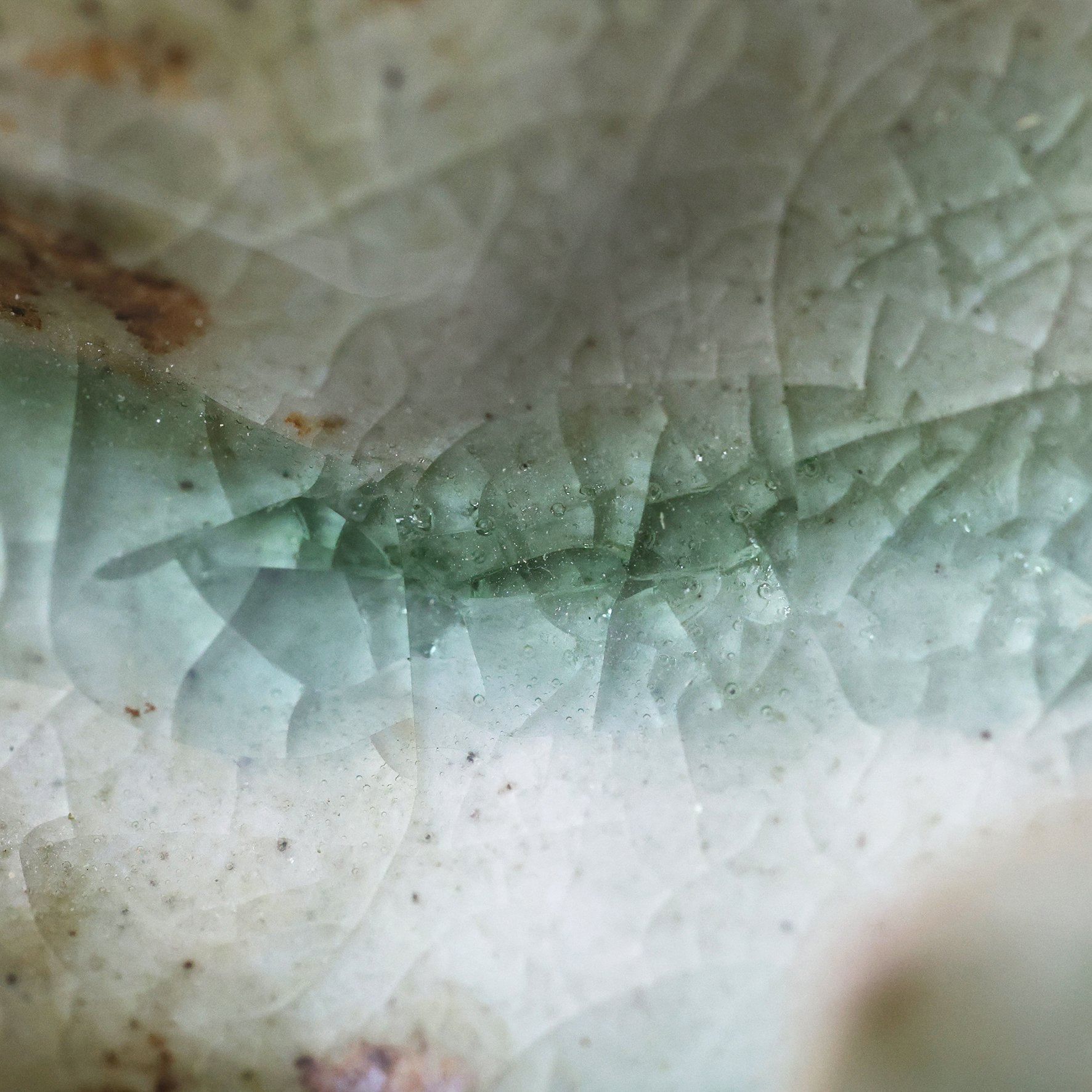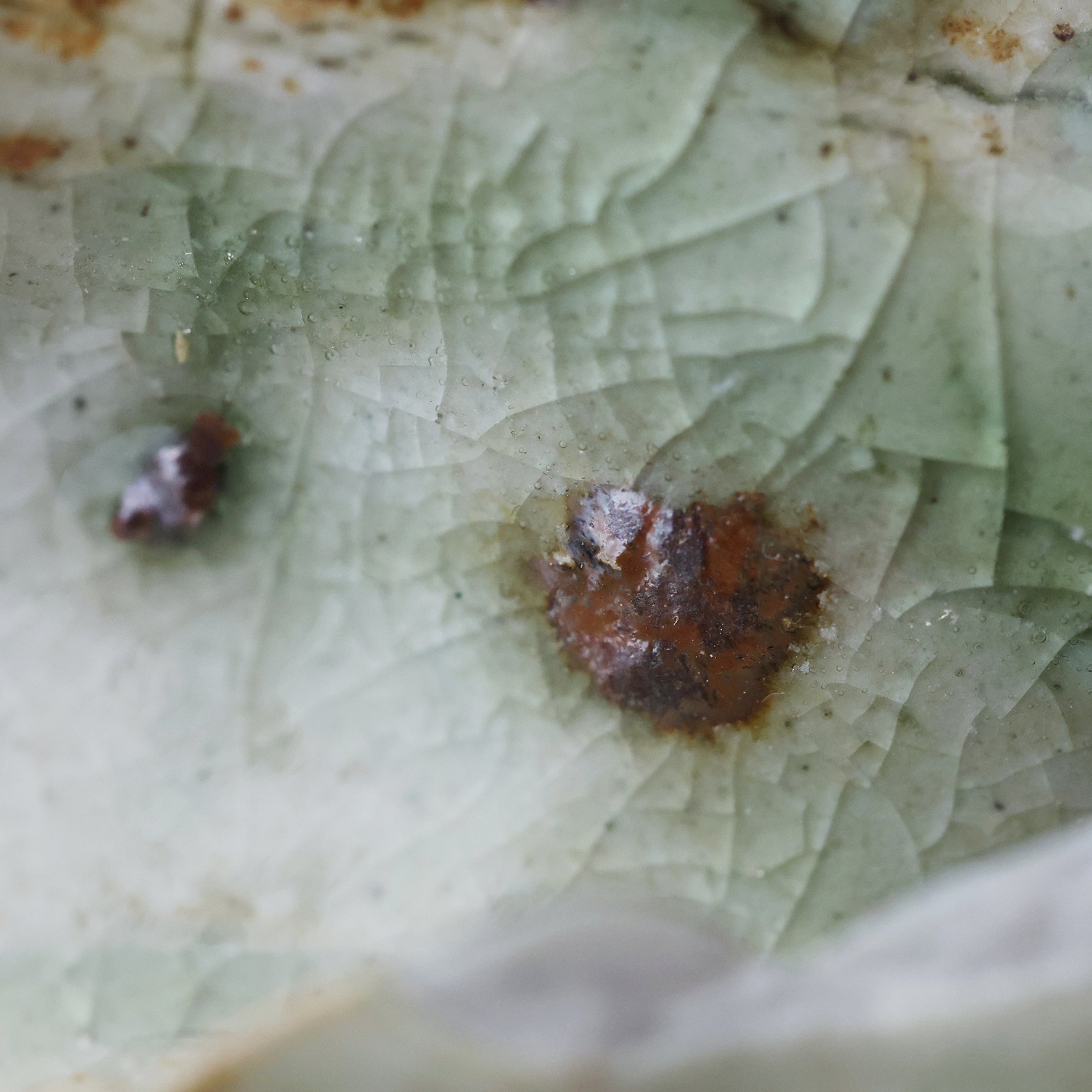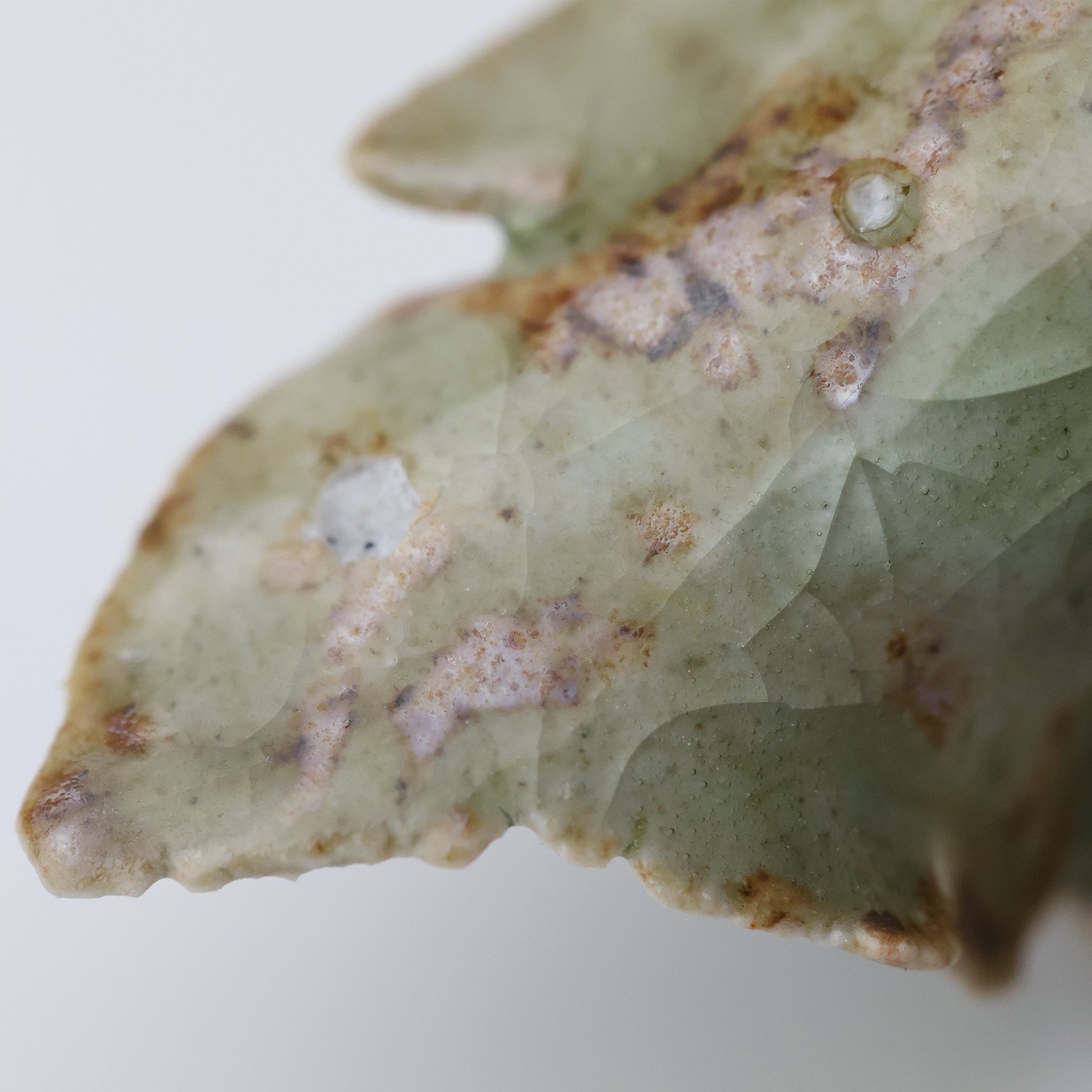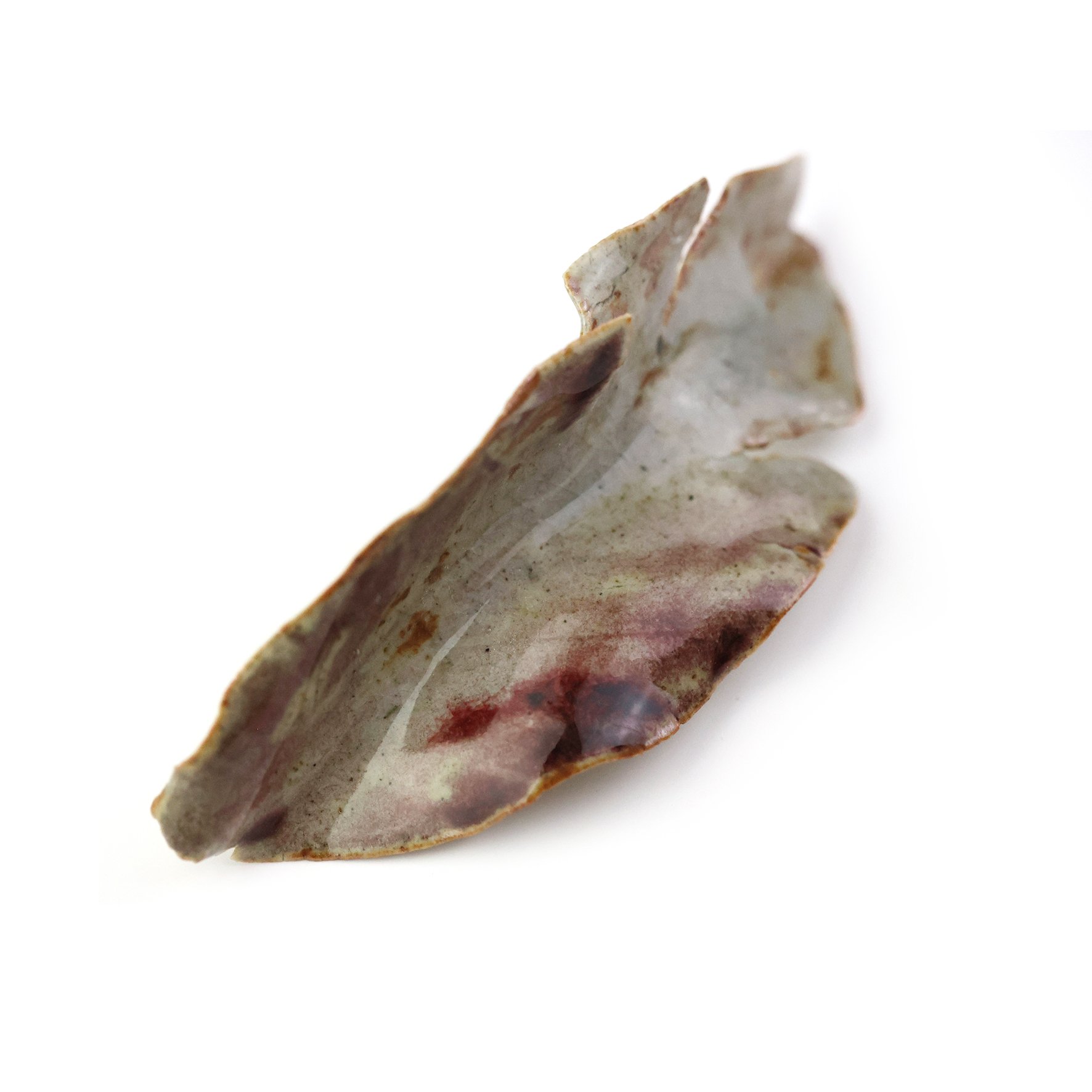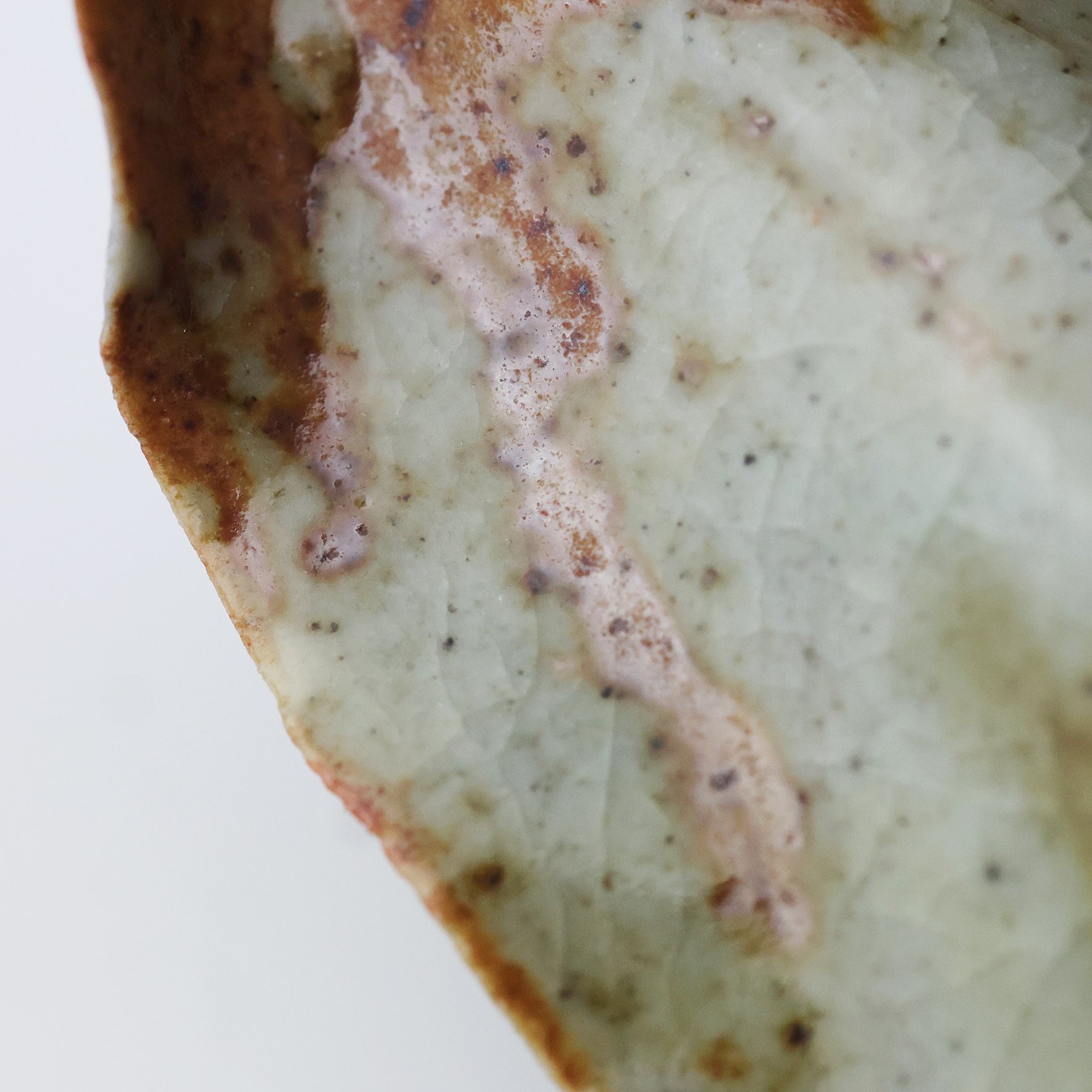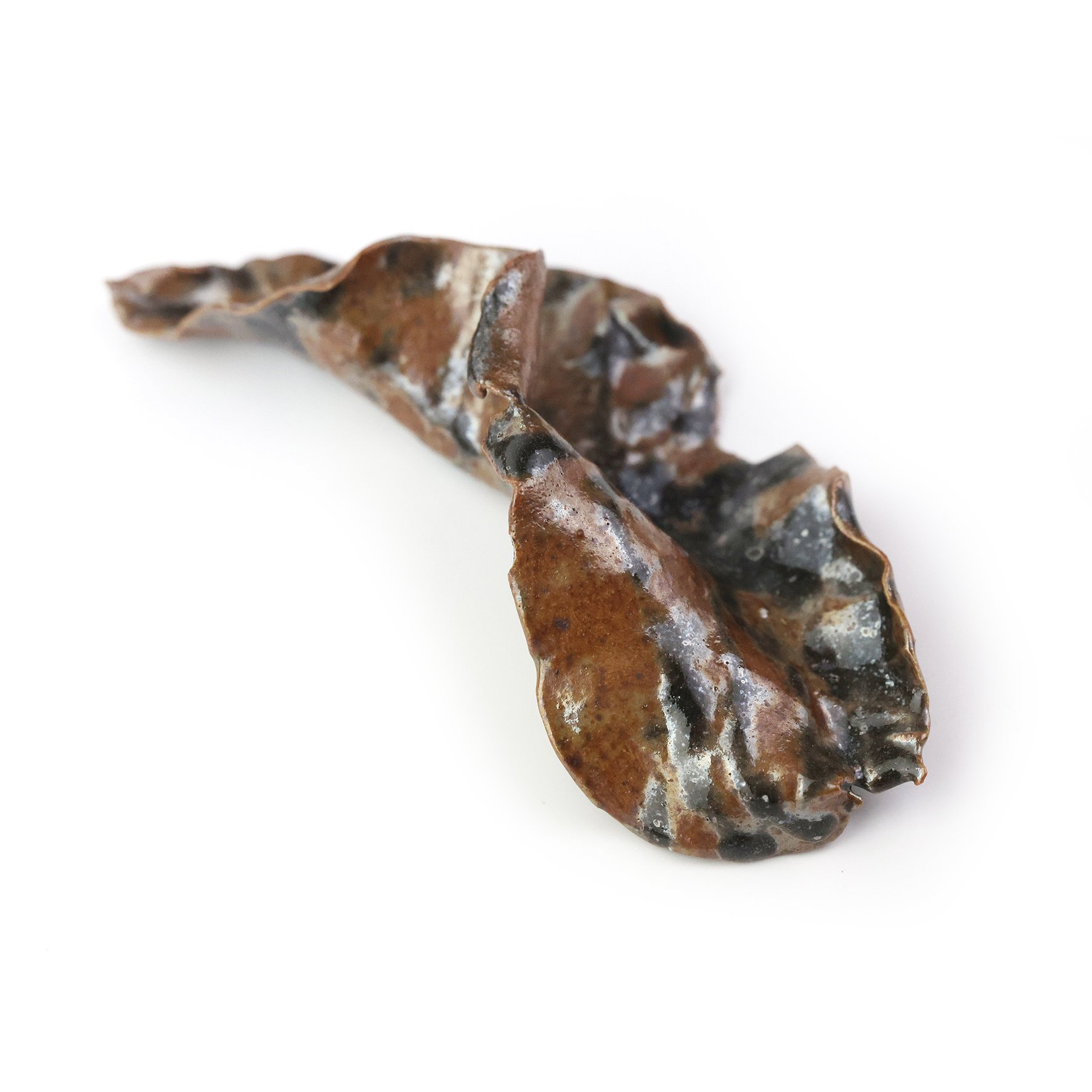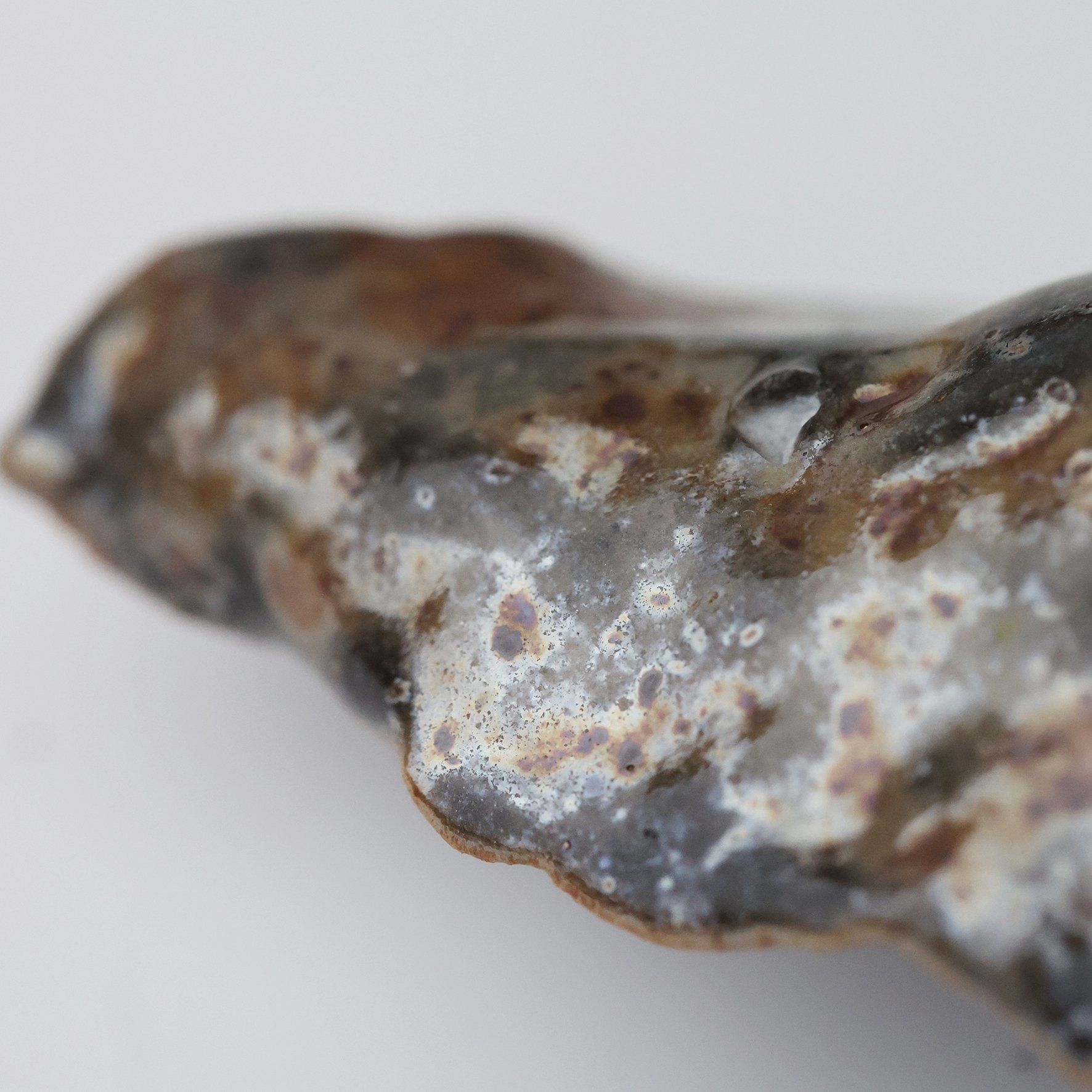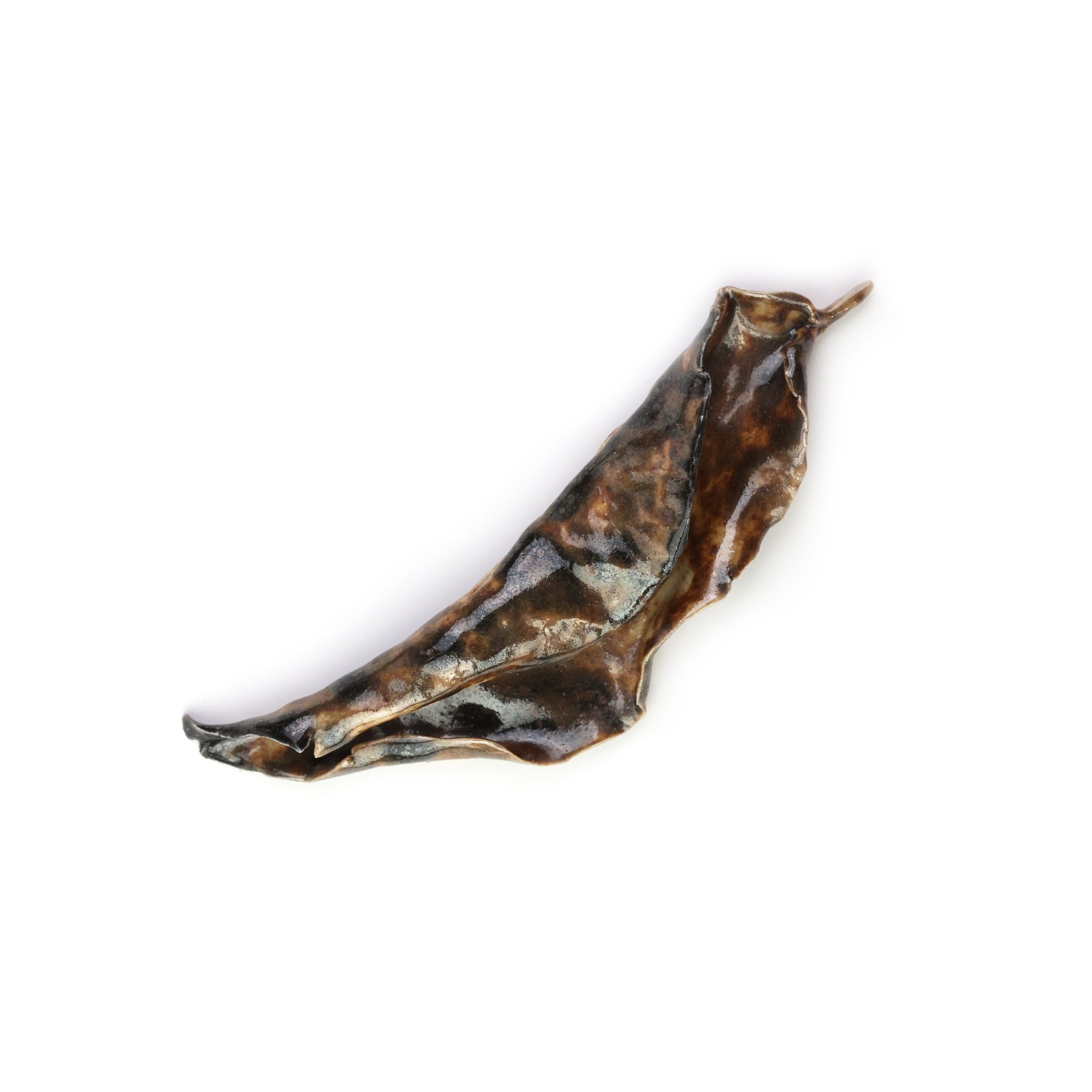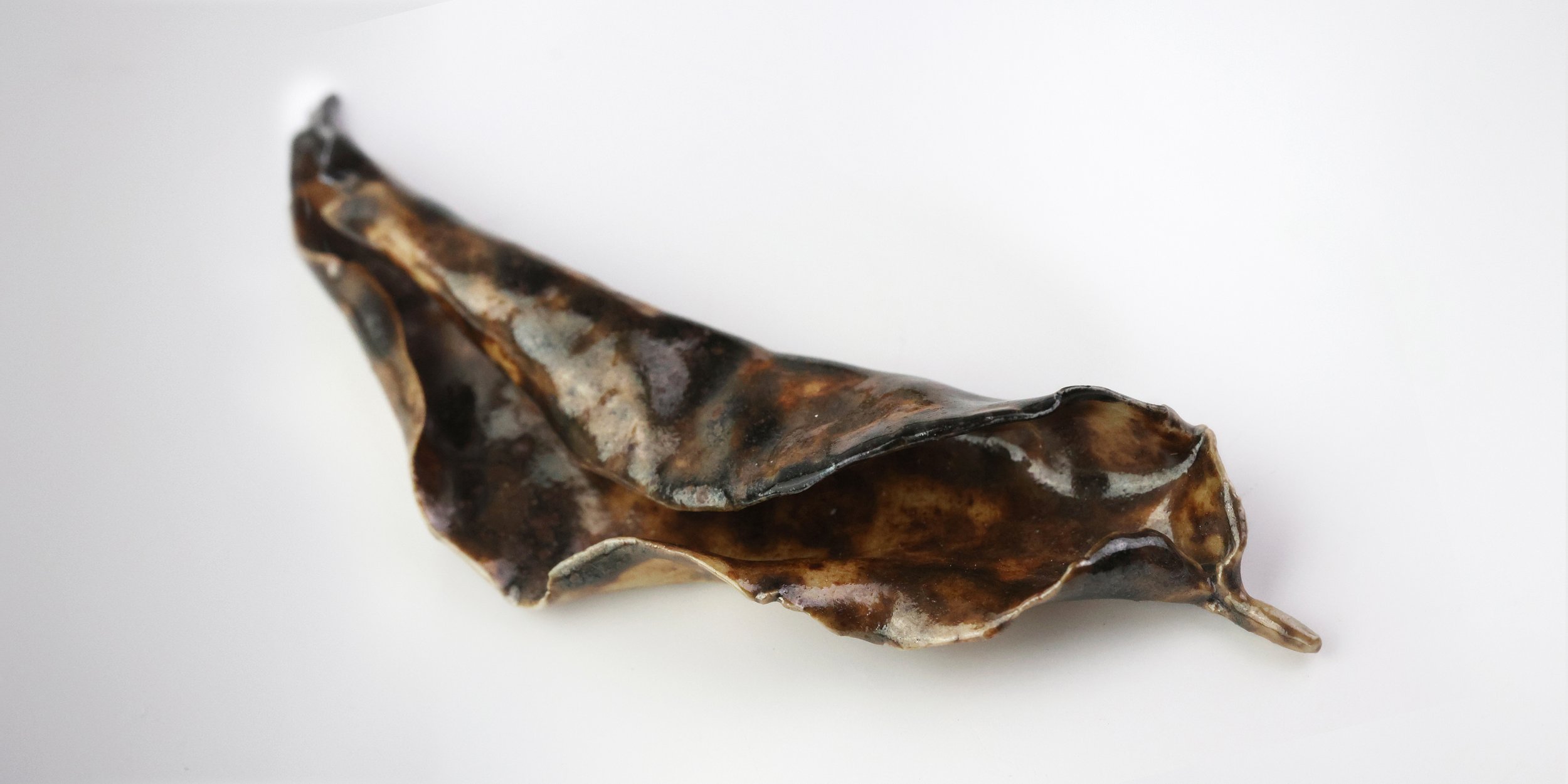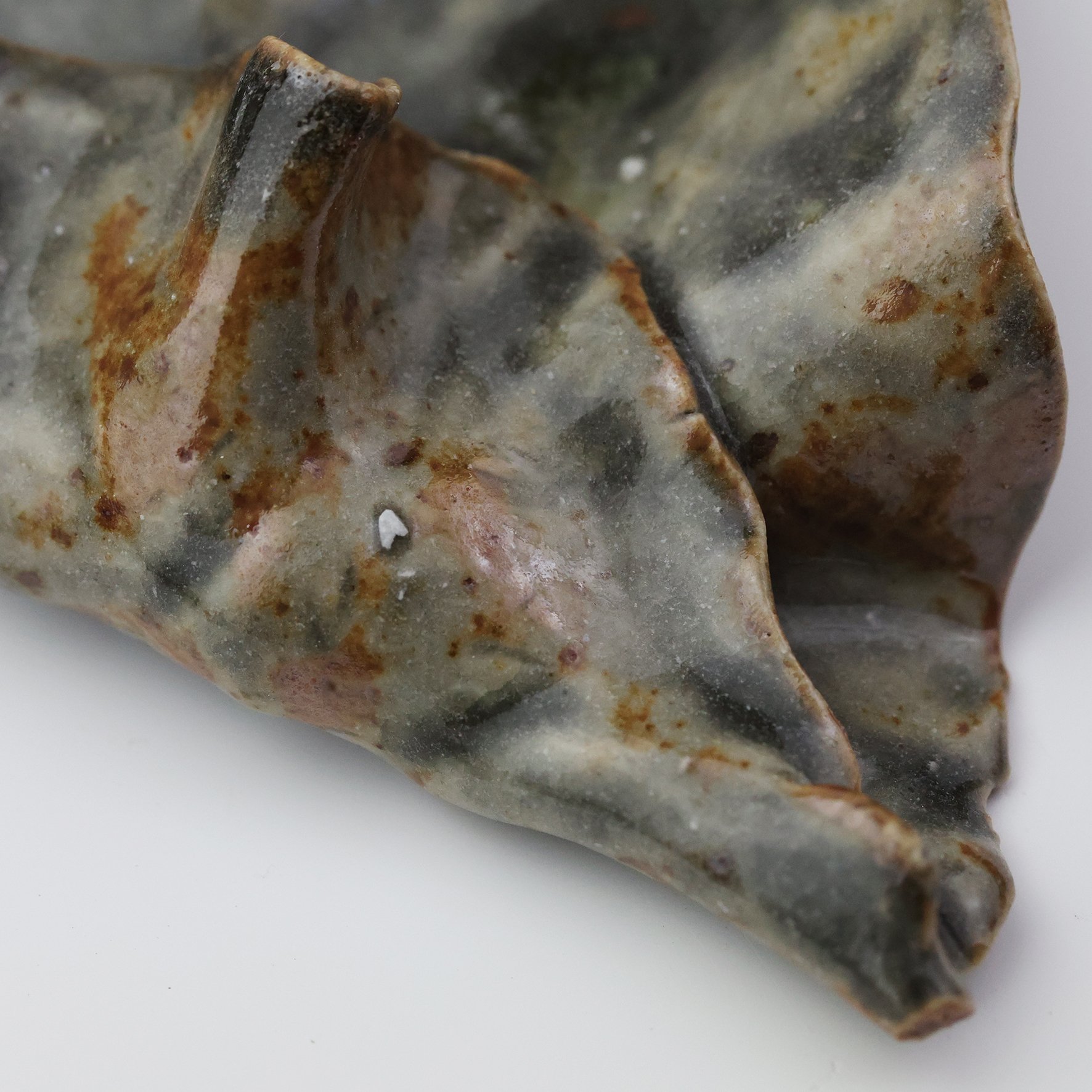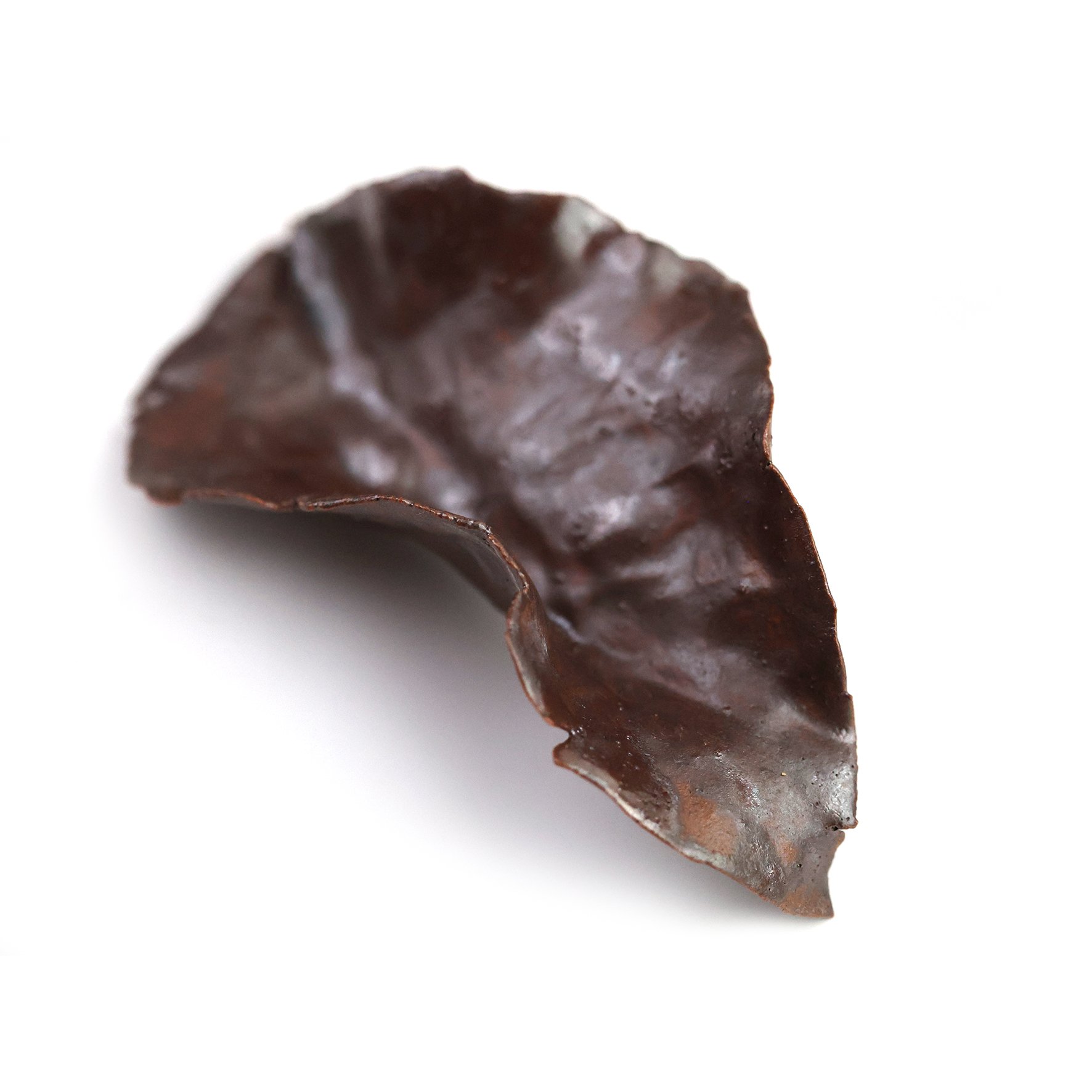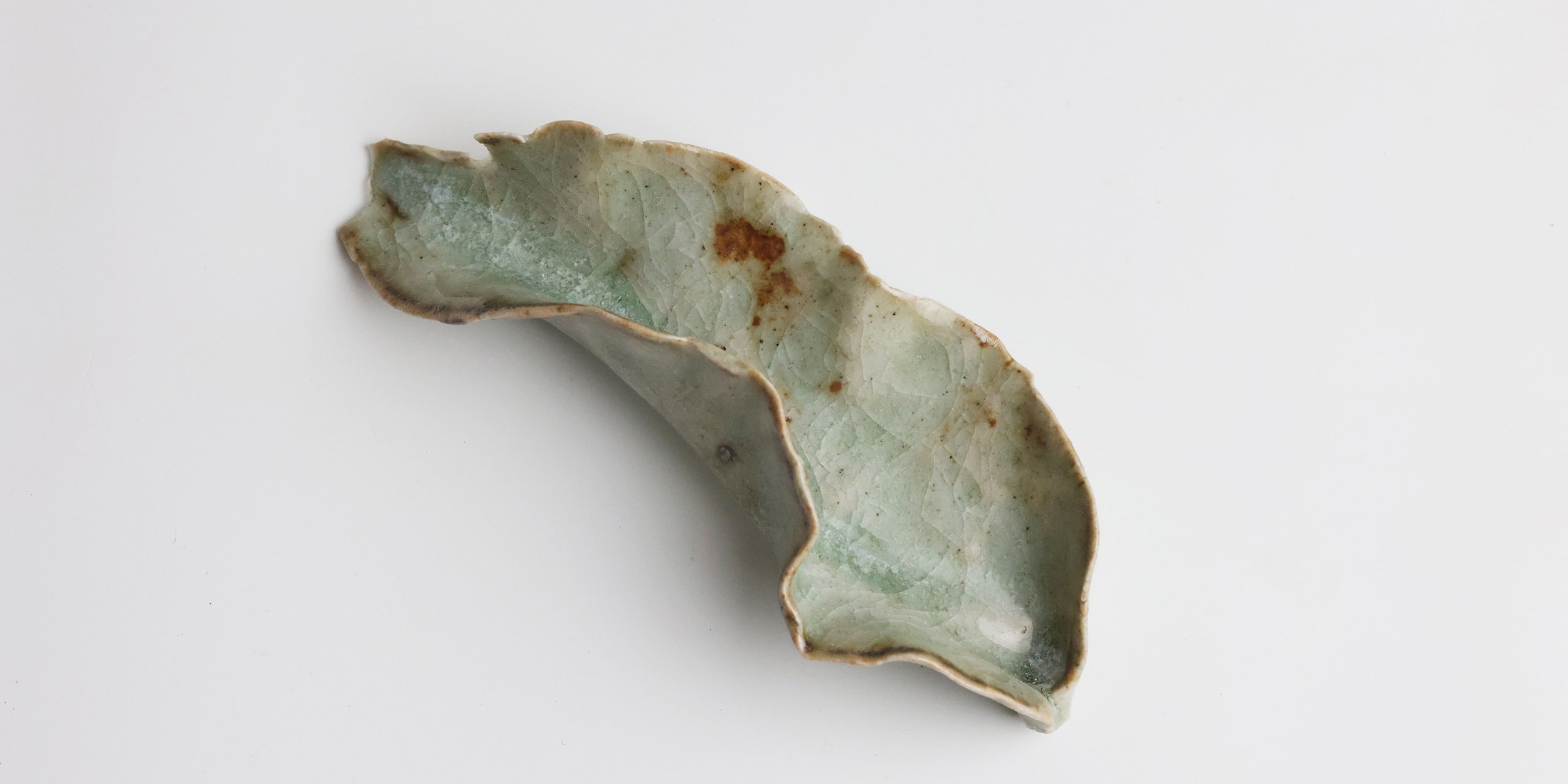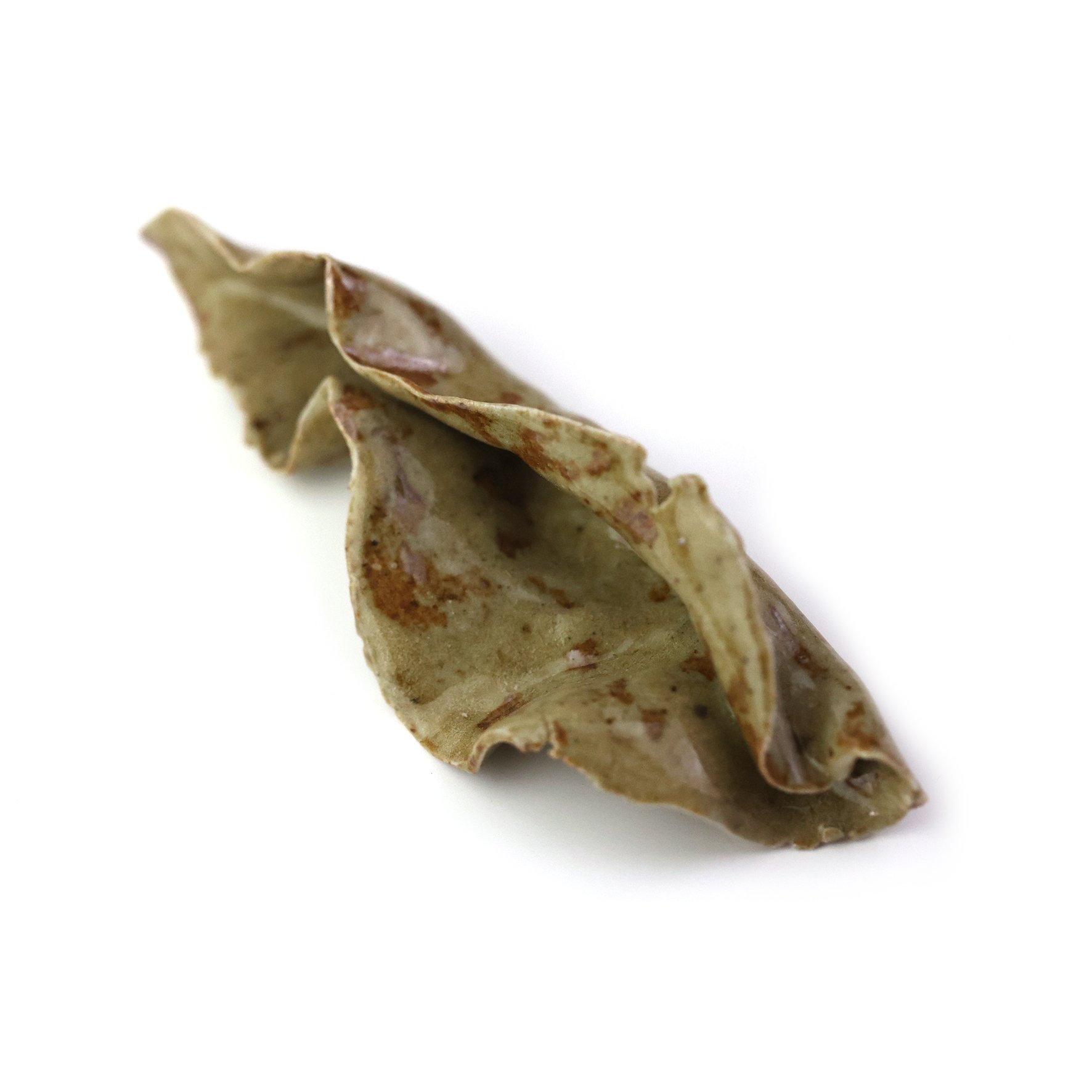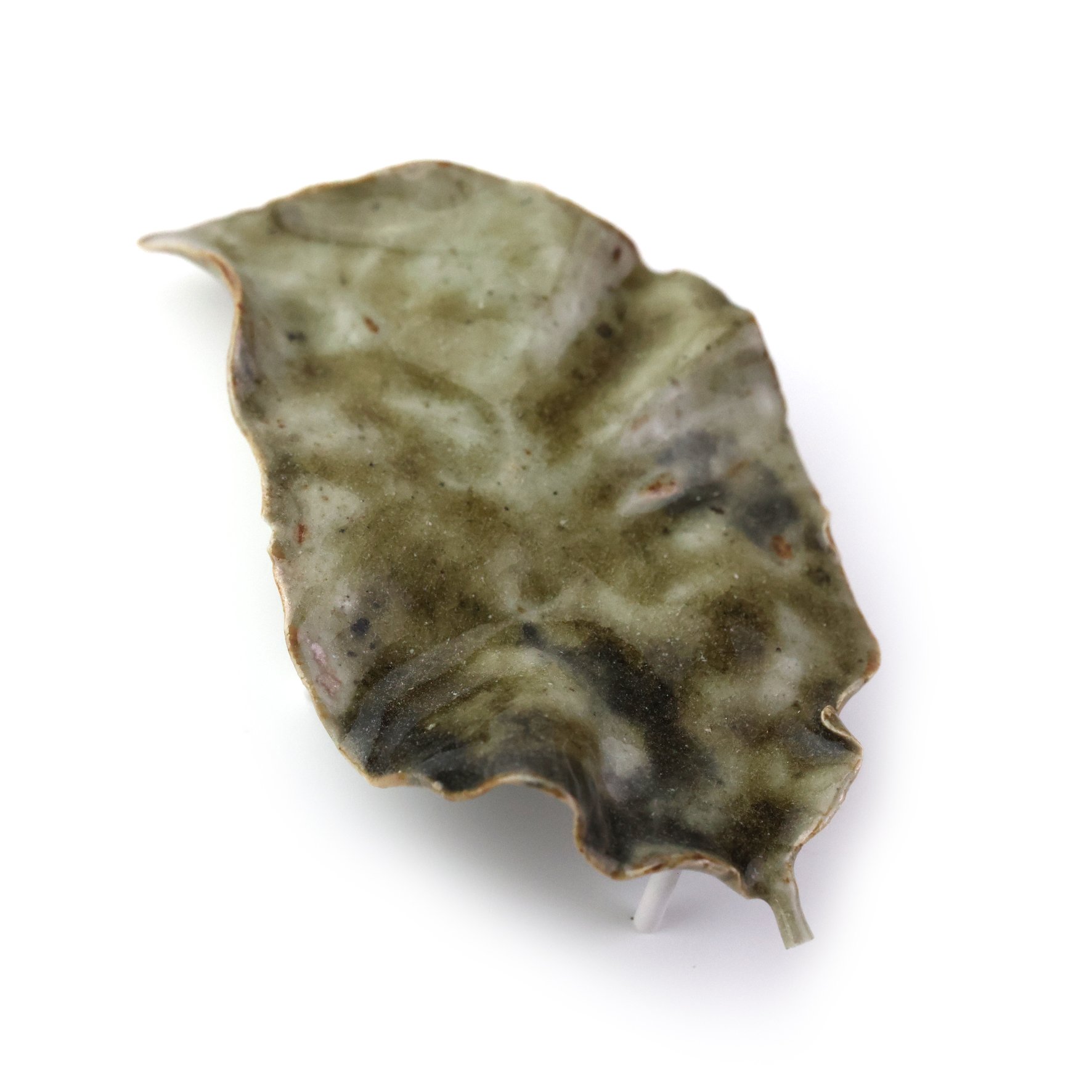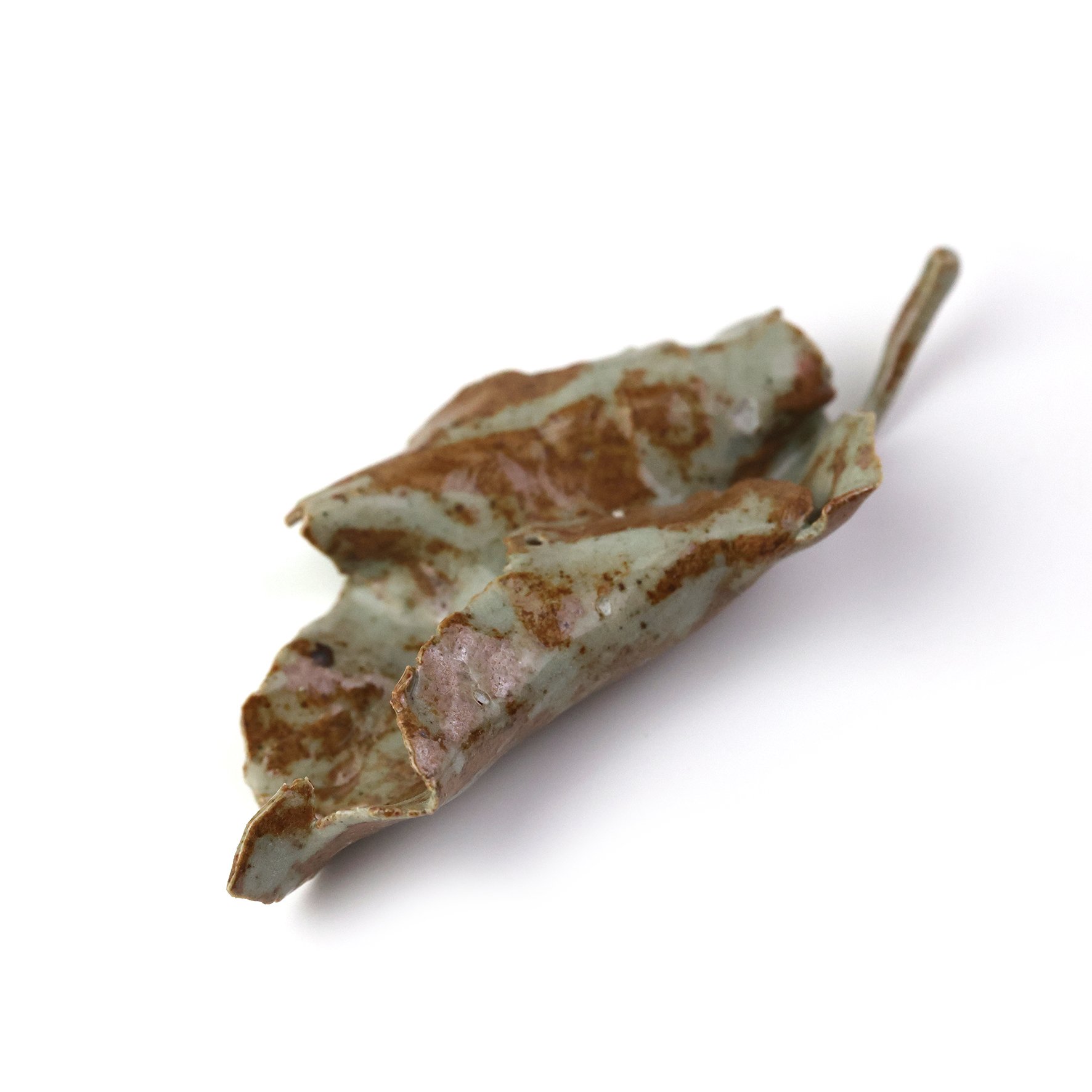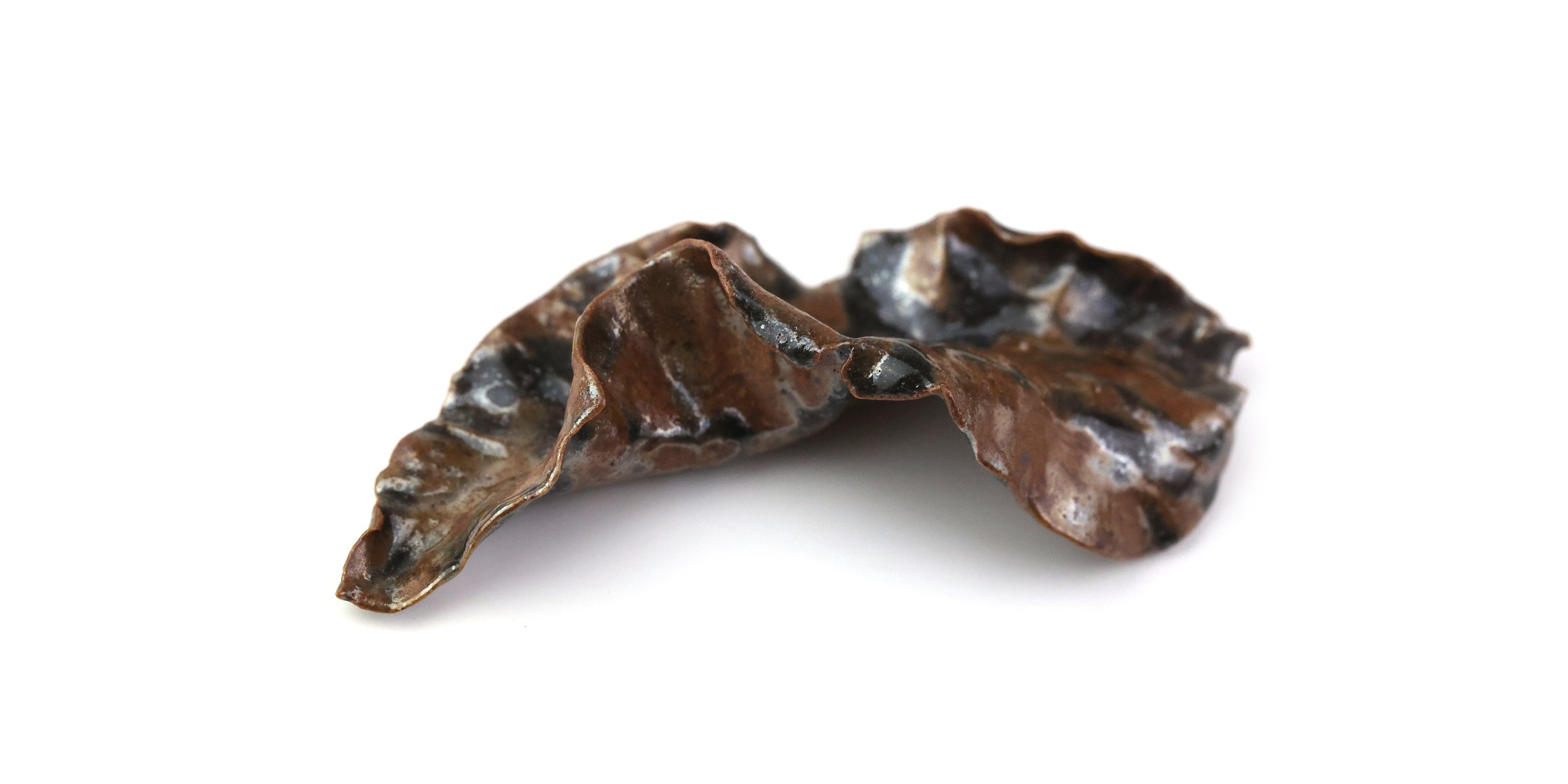千叶集 Leaves
陶瓷+摄影;瓷泥、植物灰、数码微喷;
Ceramics + photography; porcelain clay, vegetable gray, digital micro-jet;
2022
这件作品是将超富集型植物体内的重金属元素通过火焰显影并对之进行观察。因为环境和生物体是相联的,环境的信息通过河流和土壤的流动在植物上留下了印记。在件作品中,艺术家将超富集型植物烧成灰,制成植物灰釉,然后将釉料涂在叶片的形状的瓷片上。陶瓷叶片经过高温烧制后,植物体内的金属粒子便转换成釉面的颜色,这些颜色有的像枯叶、有的像嫩芽,皆由植物灰的金属成分决定的。当釉的转化完成后,艺术家继续对釉面进行显微镜观察,发现其颜色的组成是来自一些不同程度的金属晶体。而这些被火融化后凝结在一起的金属晶体,便是人类活动在环境中留下的痕迹。
This work involves using flames to visualize and observe heavy metal elements within hyperaccumulator plants. The environment and organisms are interconnected, with information from the environment leaving traces on plants through rivers and soil. In this artwork, the artist burns hyperaccumulator plants to ashes and creates a unique glaze applied to ceramic pieces shaped like leaves. After high-temperature firing, the metal particles within the plant transform into the colors of the glazed surface on the ceramic leaves. Some resemble dried leaves, while others resemble tender shoots, all determined by the metal components in the plant ash. The artist continues to observe the glaze under a microscope, discovering that the diverse colors originate from variations in the crystallization of metals. These melted and solidified metal crystals are traces of human activities in the environment.

